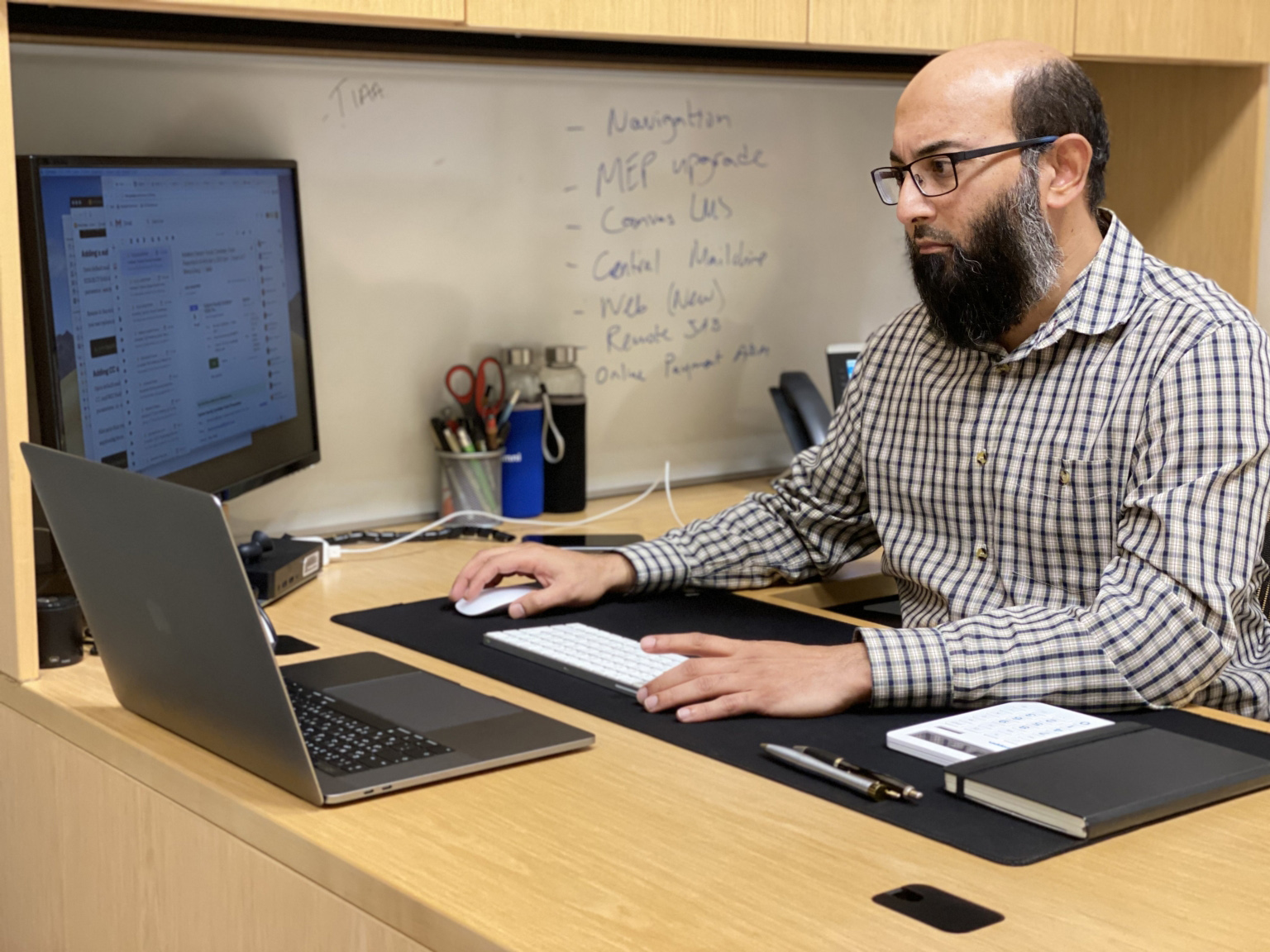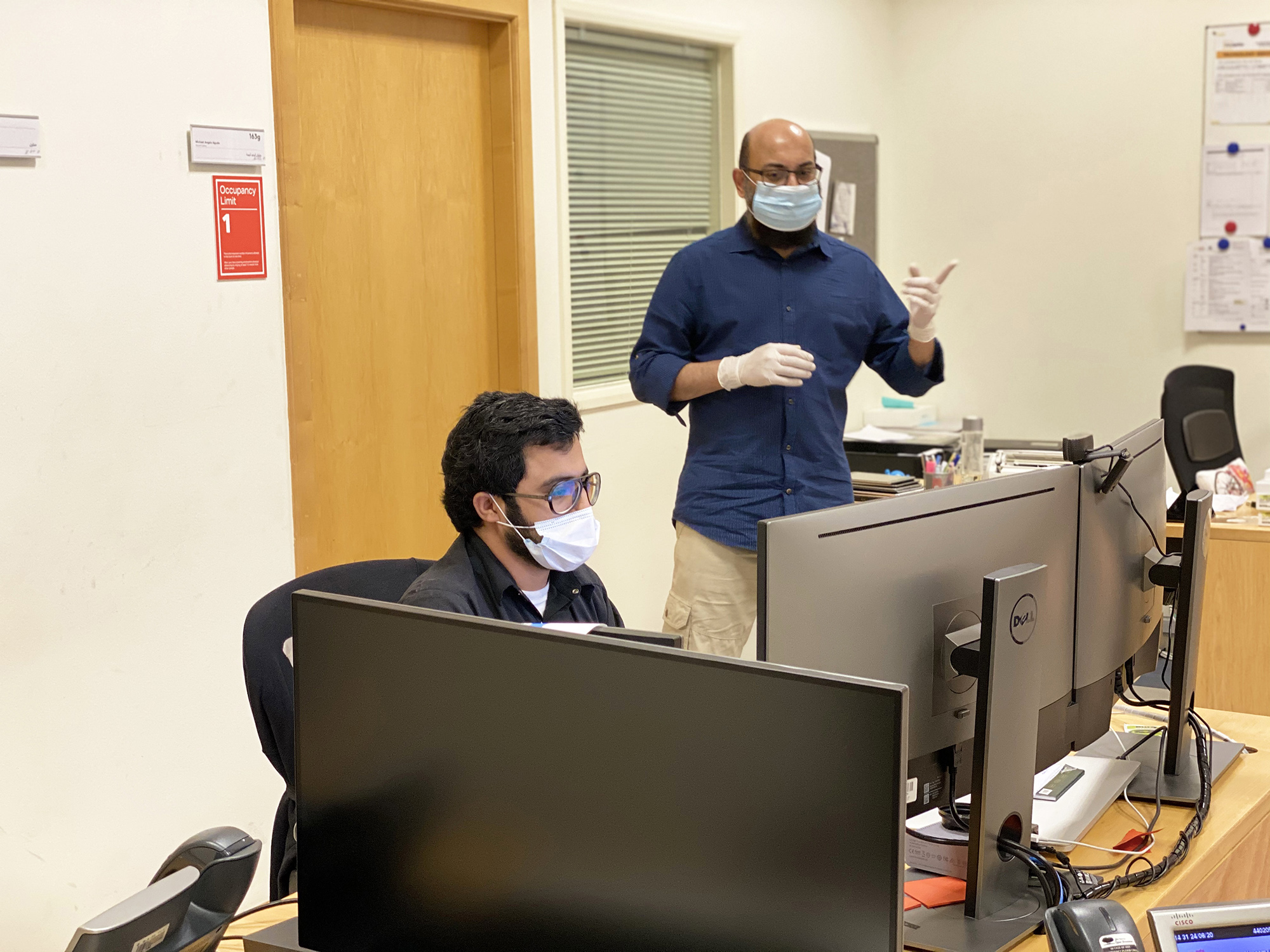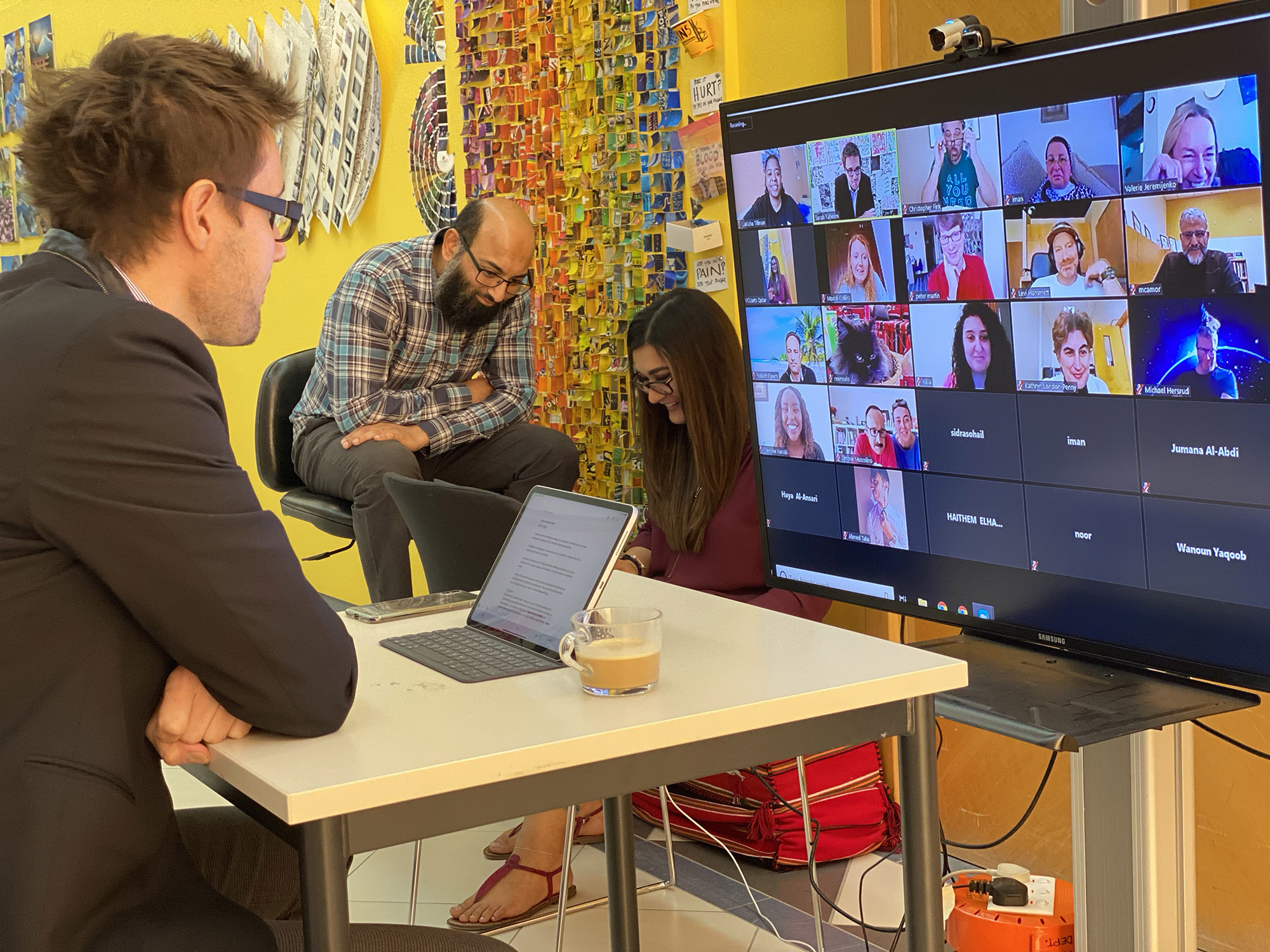- Academics
- Admissions
- Enrollment & Registration
- Research
- Academic & Creative Spaces
- Strategic Partnerships
- Our Impact
- Student Affairs
- Alumni
- About VCUarts Qatar
- Community & Continuing Education
OUR INTERNATIONAL ART AND DESIGN BIENNIAL, TASMEEM DOHA, IS BACK!

How VCUarts Qatar’s IT department – with their trademark penchant for meticulous service – helped over 500 people transition to online learning.
By Mirza Baig – Chief Technology Officer, VCUarts Qatar
With information technology at the core of almost every business or organization, it goes without saying that I’ve attended quite a few crisis management workshops in my career. Those workshops, to a certain extent, helped, as they train participants to anticipate, respond to, recover, and learn from adverse situations.
Now, almost 10 months into the start of the pandemic, I realize that in addition to those mock drills, my biggest asset has been a 14-member-strong IT department who quietly stepped up to the task of assisting over 500 staff, students and faculty members transition to virtual learning.

Over February and March, as Qatar experienced the initial impact of the COVID-19 pandemic, and VCUarts Qatar adapted to remote teaching, one of the immediate requirements was the need for a campus-wide online communication tool for faculty to continue teaching, and for staff to continue their administrative support.
We quickly reached out to our home campus in Richmond to reserve Zoom enterprise licenses which covered all VCUarts Qatar faculty and staff; on a parallel track we developed and implemented workshops to ensure users were able to make the most of the Zoom platform.
In addition, our staff assisted faculty members to utilize remote teaching tools like Blender, a 3D modeling tool, and Spark AR – an augmented reality platform – to make their teaching sessions interactive, as typical in-class physical engagement was no longer possible.
Over the ensuing weeks, when it became obvious that social restrictions would continue for the duration of the ongoing calendar year, the university shifted its focus to preparing for the start of the next academic year set to commence in August.
We were approached by faculty requesting assistance with moving their course content to a digital platform. To facilitate such requests, we helped faculty adapt their course content for digital platforms. We also procured additional licenses, allowing us to introduce more virtual spaces where course content could be moved online.
Looking back, I’d say it was an interesting – albeit steep – learning experience for the IT team as well. We discovered that the degree of support needed varied from faculty to faculty – while some faculty members wanted to use only certain elements of the platform, others wanted to run only assignments and tests on it, and still others wanted to move an entire semester’s teaching material online.

In addition, a member of our team worked with the faculty who were leading the creation of Teach Lab, a pop-up website. This was an initiative specifically developed to help instructors, by curating and posting appropriate remote-teaching tips and suggestions, onto the website.
Switching to a remote teaching environment also meant that technology-related equipment, (monitors, printers, scanners, webcams, lighting, audio, etc.) had to be either relocated or purchased, for faculty and staff who would be working from home.
Access to our services too, had to be streamlined. In order for faculty, staff and students to reach us quickly while we ourselves were working from home, our team installed an application called Jabber in our mobile phones; the software allowed incoming landline calls to be made available on our mobile phones as well.
Open Zoom sessions were also established so that faculty and student groups could communicate with our team at any time, creating a similar experience as if they were ‘dropping in’ to our department, in person.
We also collaborated with the Department of Communications to establish a dedicated COVID-19 website exclusively for the university community. This platform continues to offer up-to-date COVID-19-related information, announcements, policy guidance, and frequently asked questions pertaining to Qatar and VCUarts Qatar.
When I was requested to share the collective experiences of the IT department over the last few months, I started jotting down bullet points. And that’s when I realized that if finding the words to verbalize our experiences wasn’t difficult enough, trying to describe how each member in our team quietly supported each other and the wider community – understanding exactly how far to bend, and rebound, without snapping under pressure – was next to impossible.
And that’s how I choose to sum up the last few months, for not just the IT department, but the entire VCUarts Qatar community – by saying that it is possible, to a certain degree to keep a tab on physical actions; the human spirit of collaboration, however, defies description.
Tags
- augmented reality
- Blender
- Chief Technology Officer
- COVID-19 pandemic
- crisis management
- Crossing
- digital platforms
- digital transformation
- distance education
- Dotting
- educational technology
- faculty support
- IT department
- Jabber
- Mirza Baig
- online communication
- pandemic response
- RefreshQatar
- remote learning
- remote teaching
- Spark AR
- staff support
- student support
- Teach Lab
- technology support
- VCU Richmond
- VCUQatar
- virtual learning environment
- virtual teaching
- Zoom enterprise

